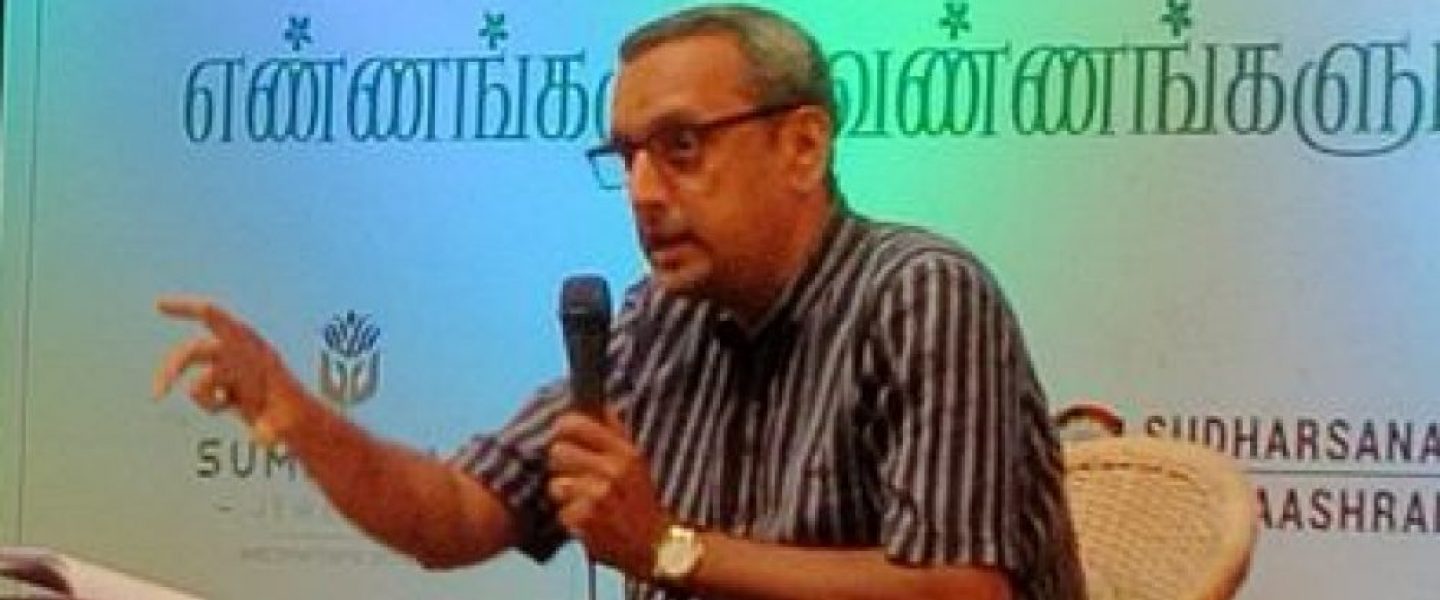
One word to describe this book – ‘magnificent’.
Well known Indian Tamil writer Jeyamohan exemplifies in the art of describing places and events in this so-called travelogue so much so that one gets a feel of having traveled with his team all along.
This travelogue is on the trail of ancient Jain monasteries and temples. Jains in ancient India exemplified in the art of trade and established the now famous trade routes. Jeyamohan and his friends go in search of this ancient trade route and, in the process, explore the monasteries and caves where Jain monks lived and preached from.
Being an expert in the philosophical history of India, Jeyamohan excels in the art of describing the philosophical connection at each place of his visit. Not only are we enthralled by the beauty of his Tamil language but also by the juxtaposition of metaphor and thought.
The Jain trail takes place over a period of one month and covers the entire western length of the physical India of the present.
Everywhere we are treated to the enormity of the temples or caves, the philanthropy of the Jain establishments in treating the pilgrims who come visiting them, the splendor of the institutions – either ruined or not yet – and the extremes of weather that the magnificent country India has to offer.
We are also audience to a repetition – the repetition in the destruction of temples by Islamic invaders and the re-construction by enterprising Jains.
Barbaric invader Allauddin Khilji finds a mention again and again for the wrong reasons. Whenever Jeyamohan mentions a temple, there is always an Islamic invasion that would have resulted in its destruction and a subsequent rebuild. The details of destruction get so frequent that you begin to expect one such when Jeyamohan visits a new place. The volumes of history destroyed by the Sultanates and Mughal zealots is simply unfathomable.
That such structures were, time and again, destroyed by pre-Mughal and Mughal invaders and have been re-built, time and again, paints a picture in contrast — foreign forces aiming at destruction and local spiritual forces aiming at re-construction and reconciliation. And there in lies the resilience of the continuous culture of India for the last 10,000 years or so.
That such a magnificent Jain trail that has existed in India and has been so cleverly hidden by successive governments in the name of ‘secularism’ is a sad commentary on the Nehruvian version of education and governance. Though we are left in awe at the different places that Jeyamohan visits because of the splendor of the structures that he describes, what pains is the enormity of efforts that successive regional and central governments have taken to hide these stupendous wonders from the common man of the country — by way of not having incorporated these in history text books.
Jeyamohan describes the common man in Maharashtra and Gujarat who welcomes strangers with open arms and a smile, and offers food and tea even at odd times of the day. That, as Jeyamohan correctly depicts, is the chord of humanity which runs through the civilization that is India.
The other uniform thread that runs through the narrative is the peaceful coexistence of Jainism and Vaishnavism in the states of Gujarat and Rajasthan. The interoperability of icons in both the religions is a lesson in the belief that unity of divinity is the founding philosophical base of India.
Jeyamohan also mentions the ‘Golden Quadrilateral’ – the four way link expressways that the Vajpayee government built ( subsequently abandoned by the Congress governments) and its benefits to India.
Among the many Hindu and Jain kings mentioned, Raja Hamir Dev of Ranthambore needs special mention. He sacrificed his kingdom and himself in order to keep his word to safeguard a couple from the strangleholds of Allauddin Khilji.
Selfless kings like Hamir Dev of Rajasthan and the Solankis of Gujarat epitomize the spirit of India.
Kudos to the author for his painstaking travel and, more than that, his equally, if not more, painstaking documentation of his travel to the minutest of detail and for this philosophical-historical treatise.
The book can be bought here.

